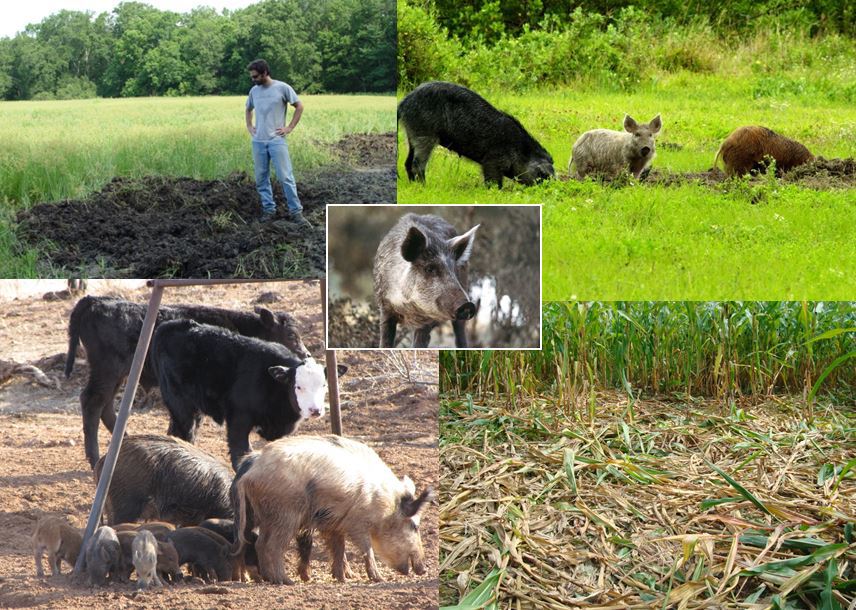Research Goals for the APHIS National Feral Swine Damage Management Program
USDA Animal and Plant Health Inspection Service sent this bulletin at 07/16/2014 01:19 PM EDT
Having trouble viewing this email? View it as a Web page.![]()

Research Goals for the APHIS National Feral Swine
Damage Management Program
Posted by Gail Keirn, APHIS Legislative and Public Affairs, 970-266-6007
This Spring, APHIS kicked-off the National Feral Swine Damage Management Program. The effort will help states deal with rapidly expanding feral swine populations that cause $1.5 billion in annual damages and control costs. Wildlife Services experts will lead the $20 million, multi-year program with help from APHIS’ Veterinary Services (VS) and International Services.
Invasive feral swine damage every resource APHIS works to protect— agriculture, property, natural resources, and human health. As such, APHIS plans to address feral swine issues from multiple fronts, including field operations, disease and population monitoring, and research. Research by WS and VS scientists will support strategic management decisions and provide the modeling and analysis needed to evaluate the program’s overall effectiveness. APHIS feral swine research is divided into five focus areas. Below are examples of some of the activities planned for each area in 2014-2015:
1. Damage assessments and economics
Accurate damage assessments are needed to better understand the magnitude of feral swine damage, as well as the economic and ecological benefits of feral swine management. WS and VS scientists are contracting with the National Agricultural Statistics Service to survey crop and livestock producers in January 2015 about feral swine damage. This information will provide baseline data about feral swine damage prior to WS feral swine management. Scientists will work closely with WS state offices and their partners to ground-truth the data, as well as conduct damage assessments following feral swine management. Scientists will also compare the costs and benefits associated with feral swine damage and management to resources, such as crops, rangelands, imperiled wetlands, and endangered species.
2. Toxicant development and delivery
WS research related to the development of a feral swine toxicant and delivery system is ongoing. Most efforts have focused on the evaluation and use of sodium nitrite baits. Current field trials in Texas and Mississippi are testing the efficacy of several new formulations. Once identified, the most promising formulations will be further tested in hopes of registering a final product with the U.S. Environmental Protection Agency. The registration process takes approximately 5 years once a specific formulation is identified. Research on biomarkers, swine-specific toxicants, and delivery systems is also ongoing.
3. Detection and population estimation
Knowing how many and where feral swine are located in the United States is critical to the success of APHIS’ feral swine program. Such information not only guides operational and disease mitigation efforts, but also helps to evaluate the program’s effectiveness. As such, APHIS experts will be the first to use models to estimate feral swine occurrence and distribution at a national scale. To ensure the data collection for APHIS disease surveillance is accurate, efficient, and meaningful, WS and VS scientists are evaluating different collection techniques and strategies. WS geneticists are also employing new technologies, such as environmental DNA and whole genome sequencing, to detect feral swine.
4. Disease risks
The spread of disease from feral swine to livestock is a major concern for APHIS and its partners. WS and VS scientists are identifying regions and populations at risk for disease transmission between feral swine and livestock. They are also estimating contact rates between feral swine and livestock, and modeling how foreign animal diseases might spread within feral swine populations.
5. Fertility control
APHIS views fertility control as a complementary, not an alternative, tool to current invasive species management methods. Although fertility control does not address immediate feral swine damage and disease concerns, it may be useful in certain situations when lethal methods are impractical or infeasible. As such, WS experts are investigating fertility control methods to cause permanent sterility in feral swine.




